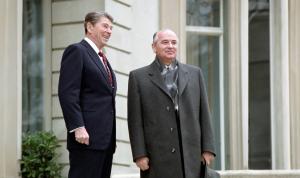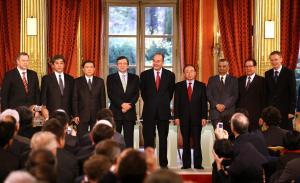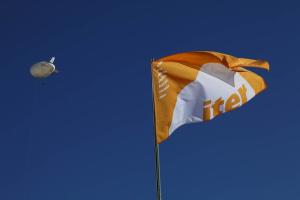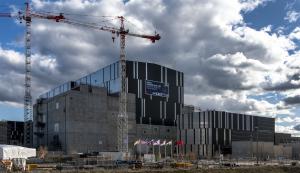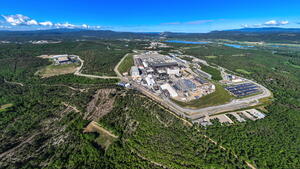History

Nearly 30 years ago, a group of industrial nations agreed on a project to develop a new, cleaner and more sustainable source of energy.
The ITER story
ITER was set in motion at the Geneva Superpower Summit in November 1985, when the idea of a collaborative international project to develop fusion energy for peaceful purposes was proposed by General Secretary Gorbachev of the former Soviet Union to US President Ronald Reagan.
One year later, an agreement was reached: the European Union (Euratom), Japan, the Soviet Union and the USA would jointly pursue the design for a large international fusion facility, ITER. Conceptual design work began in 1988, followed by increasingly detailed engineering design phases until the final design for ITER was approved by the Members in 2001.
The People's Republic of China and the Republic of Korea joined the project in 2003, followed by India in 2005. Selecting a location for ITER was a lengthy procedure that was concluded in 2005, when the ITER Members unanimously agreed on the site proposed by the European Union. The ITER installation would be built near Aix-en-Provence in southern France.
Further negotiations established the ITER Agreement to detail the construction, exploitation and decommissioning phases, as well as the financing, organization and staffing of the ITER Organization.
The ITER Agreement
In a ceremony hosted by French President Jacques Chirac and the President of the European Commission José Manuel Durao Barroso, the ITER Agreement was officially signed at the Elysée Palace in Paris on 21 November 2006 by Ministers from the seven ITER Members; this document established a legal international entity to be responsible for the building, operating, and decommissioning of the project. Following the ratification of the international treaty by all Members, the ITER Organization was officially established on 24 October 2007.
The first teams arrived on site in Saint Paul-lez-Durance, France in late 2005 after the site decision. From that moment until the start of building construction in 2010, staff was increased to approximately 500, the nuclear licensing process was initiated; site preparatory works were carried out, and procurement agencies in each ITER Member (the Domestic Agencies) were established.
Today, thousands of people are collaborating at the ITER site in Saint Paul-lez-Durance, France, as well as in China, the European Union, India, Japan, Korea, Russia and the United States to build the ITER Tokamak, the world's most advanced magnetic confinement fusion experiment.
See more about ITER history in Project Milestones. Consult ITER's founding documents in Legal Resources. See the archives of the original IAEA ITER Newsletter (1988-1998) here.

